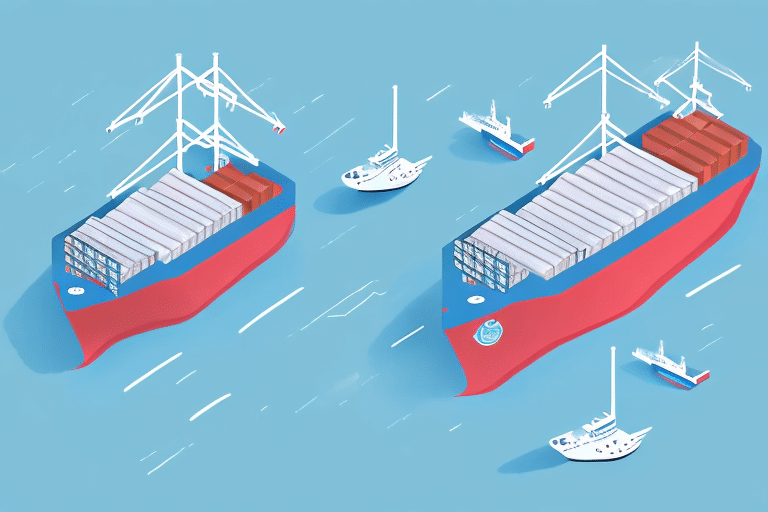Understanding FOB Shipping: What You Need to Know
If you're involved in international trade, understanding the intricacies of FOB shipping is crucial. FOB stands for "Free on Board" or "Freight on Board," and it's a widely used term in shipping and logistics. In this article, we'll explore the details of FOB shipping to help you make informed decisions for your business.
How FOB Shipping Works
At its core, FOB shipping defines a specific agreement between a buyer and seller. Under this agreement:
- Seller's Responsibility: The seller is responsible for the goods until they are loaded onto the shipping vessel.
- Buyer's Responsibility: Once the goods are loaded, ownership and responsibility transfer to the buyer, who then handles all costs associated with shipping and delivery.
While FOB is commonly used for sea freight, it can also apply to other transportation modes such as air or land.
Insurance: It's important to note that FOB shipping does not include insurance coverage for the transported goods. Buyers are responsible for obtaining insurance to protect against any damage or loss during transit.
Types of FOB Shipping
- FOB Origin: The buyer assumes ownership and responsibility once the goods are loaded onto the transportation vessel. The buyer covers all subsequent shipping costs.
- FOB Destination: The seller retains ownership and responsibility until the goods reach the buyer's location, covering all shipping costs.
Key Terminology in FOB Shipping
Understanding the following terms is essential for navigating FOB shipping:
- Port of Origin: The location where goods are loaded onto the shipping vessel.
- Port of Destination: The location where goods are unloaded from the shipping vessel.
- Freight Forwarder: A third-party logistics provider that arranges and coordinates the shipment of goods, handling tasks like customs clearance and documentation.
Working with a reliable freight forwarder can enhance the efficiency and smoothness of your shipping process.
Advantages and Disadvantages of FOB Shipping
Advantages
- Cost Control: Buyers can often negotiate better shipping rates and have more control over the shipping process.
- Clarity in Responsibilities: Clearly defines when ownership and responsibility transfer from seller to buyer, reducing misunderstandings.
- Supply Chain Efficiency: Streamlines the supply chain by allowing buyers to manage the logistics, potentially resulting in faster delivery times.
Disadvantages
- Risk of Loss or Damage: Once goods are loaded, buyers bear the risk of loss or damage during transit.
- Complex Negotiations: Negotiating FOB terms can be complex and time-consuming, especially for those unfamiliar with international shipping.
- Insurance Responsibility: Buyers must arrange their own insurance, adding to the logistical burden.
Comparing FOB Shipping with Other Shipping Methods
When selecting a shipping method, it's important to compare FOB with other common terms:
- CIF (Cost, Insurance, and Freight): The seller covers the cost, insurance, and freight to the destination port, offering more protection to the buyer.
- DDP (Delivered Duty Paid): The seller is responsible for all aspects of shipping, including duties and taxes, until the goods reach the buyer's location.
Investopedia provides comprehensive explanations of these terms. Choosing between them depends on your business needs, risk tolerance, and logistical capabilities.
Choosing the Right FOB Shipping Provider
Selecting a reliable FOB shipping provider is critical to ensure the smooth handling of your goods. Consider the following factors:
- Reputation and Experience: Choose providers with a proven track record and extensive experience in handling FOB shipments.
- Pricing: Compare rates from multiple providers to ensure competitive pricing without compromising service quality.
- Customer Service: Opt for providers with responsive and supportive customer service to address any issues promptly.
- Shipping Options: Ensure the provider offers various transportation methods (air, sea, land) to suit your specific needs.
Additionally, reviewing contracts thoroughly and understanding the terms can prevent future disputes and ensure a successful partnership.
Common Mistakes and Best Practices in FOB Shipping
Common Mistakes to Avoid
- Misunderstanding Terms: Not fully understanding the FOB terms can lead to unexpected costs and responsibilities.
- Inadequate Documentation: Failing to maintain accurate and complete shipping documents can result in delays and legal issues.
- Neglecting Insurance: Overlooking the need for adequate insurance coverage exposes your business to significant risks.
Best Practices
- Clear Communication: Maintain open lines of communication with your supplier and shipping provider to ensure all parties are aligned.
- Thorough Documentation: Keep detailed records of all shipping documents, contracts, and correspondence.
- Insurance Coverage: Always secure comprehensive insurance to protect your goods during transit.
- Contingency Planning: Develop contingency plans for potential disruptions, such as customs delays or transportation issues.
Conclusion: Is FOB Shipping Right for Your Business?
FOB shipping can be a strategic option in international trade, offering control over shipping processes and potential cost savings. However, it's essential to weigh the advantages against the responsibilities and risks involved. By thoroughly understanding FOB terms, choosing the right shipping provider, and adhering to best practices, you can effectively leverage FOB shipping to enhance your business operations in the competitive global market.








